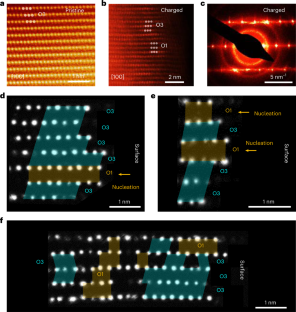バーミンガムの研究者が、鉄鋼業から排出される二酸化炭素を根本的に削減する「閉ループ」炭素リサイクルシステムを考案しました。 Birmingham researchers have devised a ‘closed loop’ carbon recycling system that could radically reduce carbon dioxide emissions from the steelmaking industry
2023-01-24 バーミンガム大学
◆この抜本的な削減は、「閉ループ」炭素リサイクルシステムによって達成されます。このシステムは、現在の高炉-基礎酸素炉システムで通常使用されるコークスの90%を置き換え、副産物として酸素を生成することが可能です。
◆バーミンガム大学化学工学部のYulong Ding教授とHarriet Kildahl博士が考案したこのシステムは、Journal of Cleaner Productionに掲載された論文で詳しく説明されており、英国だけで実施した場合、5年間で12億8000万ポンドのコスト削減と英国全体の排出量の2.9%削減が可能であることが示されています。
◆Ding教授は次のように述べています。「鉄鋼セクターの脱炭素化に関する現在の提案は、既存のプラントを段階的に廃止し、再生可能な電力で駆動する電気炉を導入することに依存しています。しかし、電気炉の建設には10億ポンド以上の費用がかかるため、パリ協定を達成するために残された時間では、この転換は経済的に実現不可能です。私たちが提案するシステムは、既存の工場に後付けすることができるので、座礁のリスクを減らすことができ、CO2の削減とコスト削減の両方をすぐに実現することができます” 。
◆この新しいリサイクルシステムは、トップガスからCO2を回収し、「ペロブスカイト」材料と呼ばれる結晶性鉱物の格子を用いてCOに還元するものである。この反応は、再生可能エネルギーや高炉に接続された熱交換器で発電できる温度範囲(700〜800℃)で行われるため、この材料が選ばれました。
◆高濃度のCO2が存在する環境では、ペロブスカイトがCO2を酸素に分解し、格子に吸収され、高炉に戻されるCOとなる。ペロブスカイトは、低酸素環境下で行われる化学反応により、元の形に再生することができる。生成された酸素は、塩基性酸素炉で鉄を製造する際に使用することができる。
<関連情報>
- https://www.birmingham.ac.uk/news/2023/novel-adaptation-for-existing-blast-furnaces-could-reduce-steelmaking-emissions-by-90
- https://www.sciencedirect.com/science/article/pii/S095965262300121X
熱化学セクターカップリングによる高炉-基礎酸素炉製鉄の費用対効果の高い脱炭素化 Cost effective decarbonisation of blast furnace – basic oxygen furnace steel production through thermochemical sector coupling
Harriet Kildahl,Li Wang,Lige Tong,Yulong Ding
Journal of Cleaner Production Available online: 5 January 2023
DOI:https://doi.org/10.1016/j.jclepro.2023.135963

Highlights
- •Decarbonisation of BF-BOF through thermochemical closed carbon looping.
- •Demonstration of mass and energy flows of thermochemical BF-BOF system.
- •88% emissions reduction of UK steel industry through £720 million investment.
- •Decarbonisation without retiring of existing BF-BOF, reducing stranded assets.
- •After 5 years, £1.28 billion savings and total UK-wide emissions reduction of 2.9%.
Abstract
We present here a first-principles study of the sector coupling between a thermochemical carbon dioxide (CO2) splitting cycle and existing blast furnace – basic oxygen furnace (BF-BOF) steel making for cost-effective decarbonisation. A double perovskite, Ba2Ca0.66Nb0.34FeO6, is proposed for the thermochemical splitting of CO2, a viable candidate due to its low reaction temperatures, high carbon monoxide (CO) yields, and 100% selectivity towards CO. The CO produced by the TC cycle replaces expensive metallurgical coke for the reduction of iron ore to metallic iron in the blast furnace (BF). The CO2 produced from the BF is used in the TC cycle to produce more CO, therefore creating a closed carbon loop, allowing for the decoupling of steel production from greenhouse gas emissions. Techno-economic analysis of the implementation of this system in UK BF-BOFs could reduce steel sector emissions by 88% while increasing the cost-competitiveness of UK steel on the global market through cost reduction. After five years, this system would save the UK steel industry £1.28 billion while reducing UK-wide emissions by 2.9%. Implementation of this system in the world’s BF-BOFs could allow the steel sector to decarbonise in line with the Paris Climate Agreement to limit warming to 1.5 °C.



